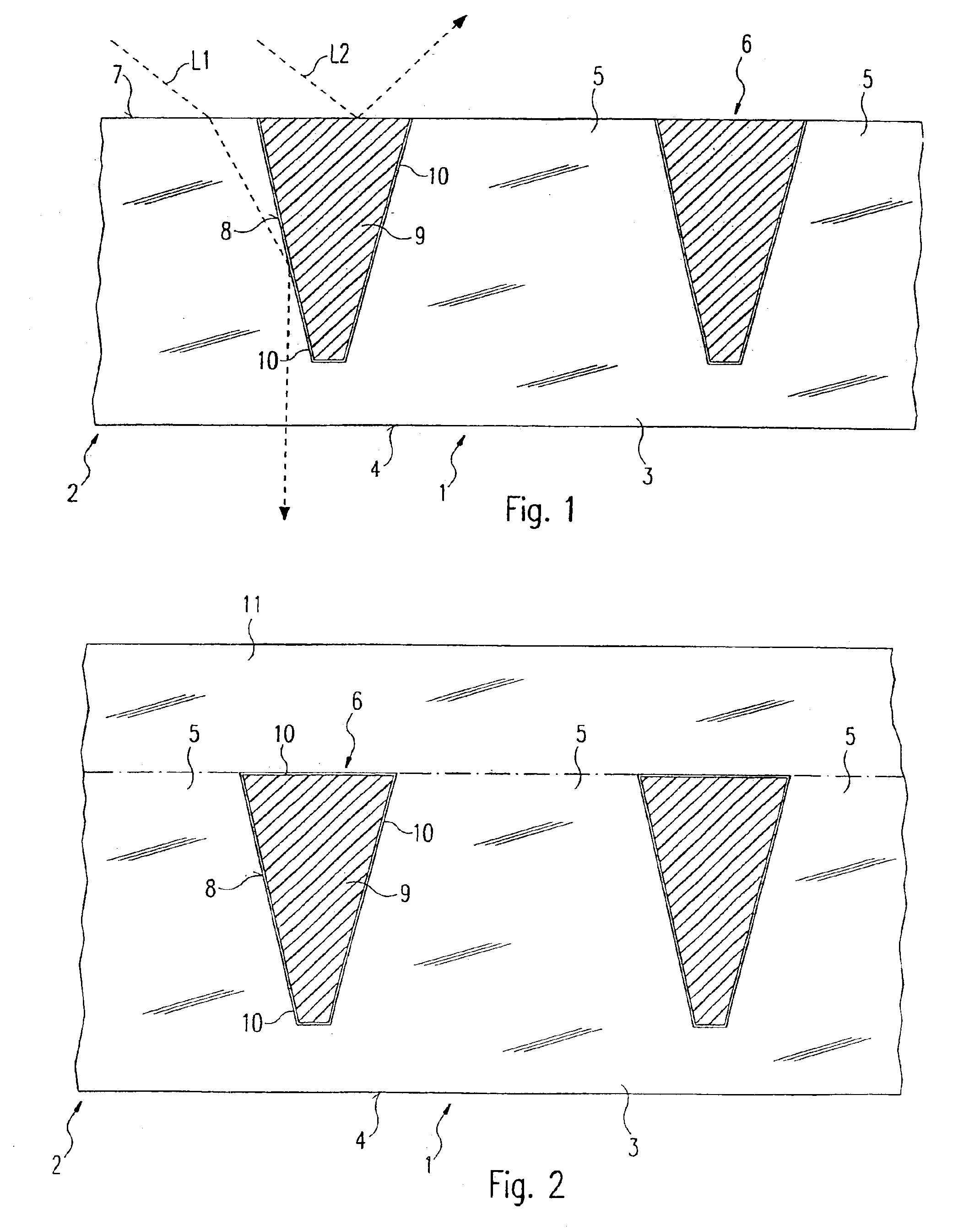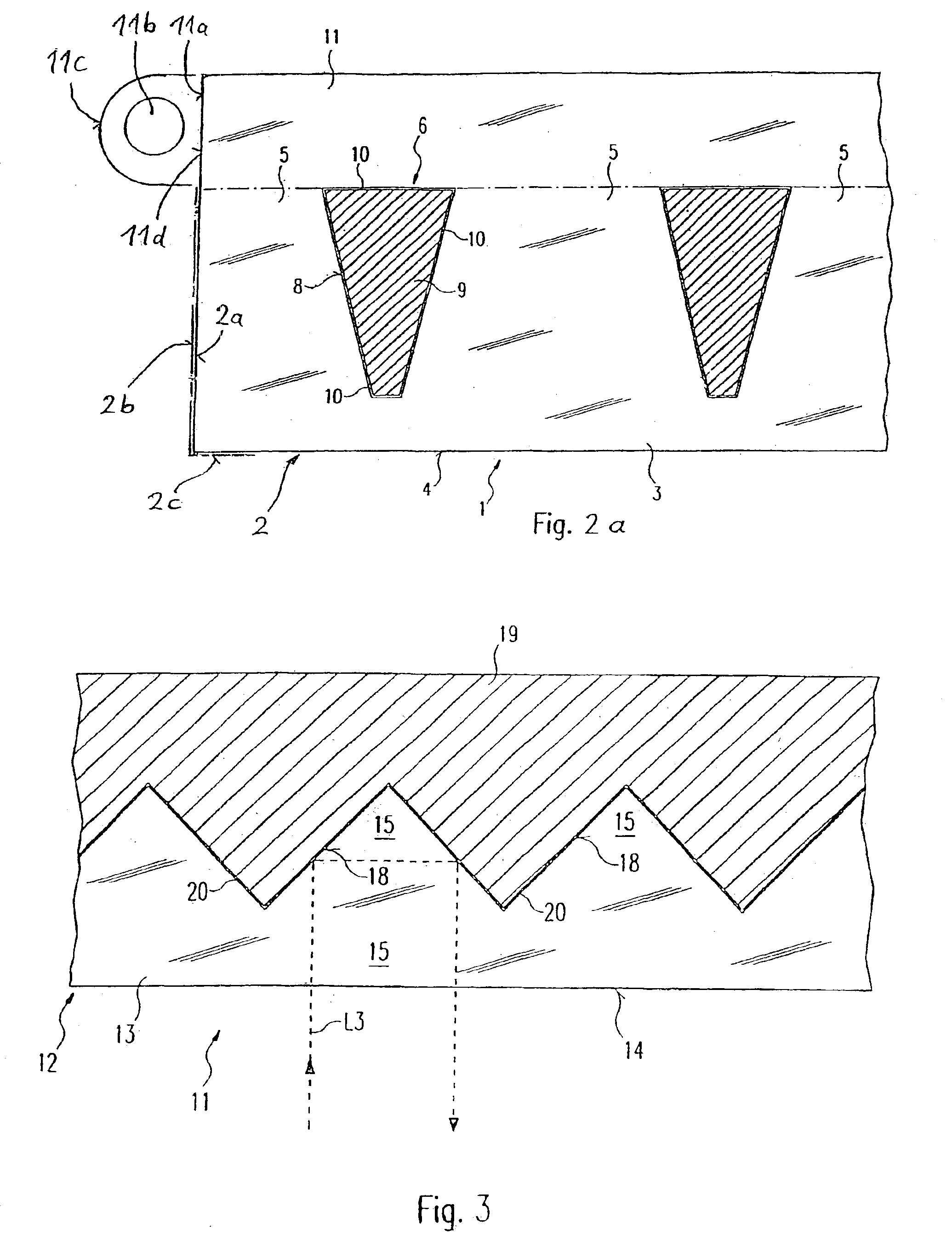Optical element having total reflection
a technology of optical elements and total reflection, applied in the field of optical elements, can solve the problems of loss of total reflection capability, and achieve the effect of simple and more economical possibility
- Summary
- Abstract
- Description
- Claims
- Application Information
AI Technical Summary
Benefits of technology
Problems solved by technology
Method used
Image
Examples
Embodiment Construction
[0031]The first embodiment of an optical element 1 in accordance with the invention illustrated in FIG. 1 corresponds to the optical element known from FIG. 7. It is likewise of a transparent base body 2, which is formed by means of a plate-like base part 3 the underside 4 of which forms the light exit surface of the optical element 1. On the side of the base part 3 opposite to the light exit side 4 there are a plurality of microprisms 5 which taper starting from their roots, so that there arise notches 6 between the microprisms 5.
[0032]The function of the microprisms 5 consists in that a light ray entering into the transparent base body 2 at their upper side 7 exits the light exit surface 4 within a predetermined angular range. The directing of the light is thereby effected by means of total reflection at the side surfaces of the microprisms, as is illustrated by the example of light ray L1. For this purpose the transparent base body 2 consists of a material having a refractive ind...
PUM
 Login to View More
Login to View More Abstract
Description
Claims
Application Information
 Login to View More
Login to View More - R&D
- Intellectual Property
- Life Sciences
- Materials
- Tech Scout
- Unparalleled Data Quality
- Higher Quality Content
- 60% Fewer Hallucinations
Browse by: Latest US Patents, China's latest patents, Technical Efficacy Thesaurus, Application Domain, Technology Topic, Popular Technical Reports.
© 2025 PatSnap. All rights reserved.Legal|Privacy policy|Modern Slavery Act Transparency Statement|Sitemap|About US| Contact US: help@patsnap.com



